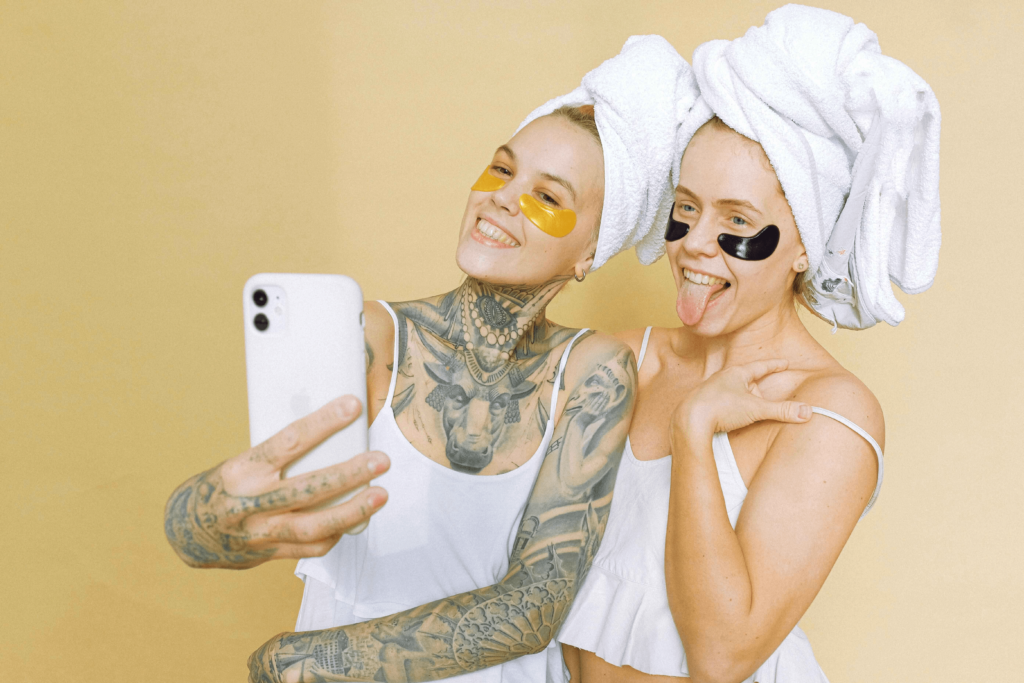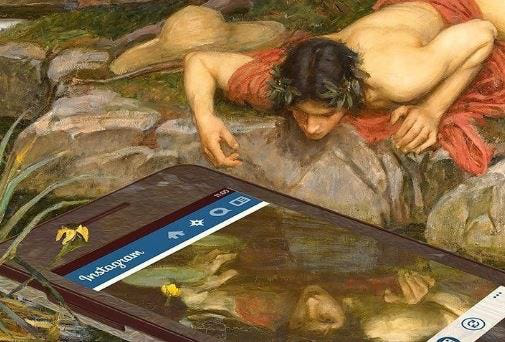Last updated on September 3rd, 2024 at 03:22 am
- How Narcissistic Tendencies Drive Consumer Behavior
- Key Statistics on Narcissism and Consumer Behavior
- The Role of Materialism in Narcissistic Self-Worth
- Luxury Goods as Status Symbols
- Social Media, Narcissism, and Consumer Culture: Key Statistics
- Social Media as a Platform to Flaunt Luxury Trips, Vacations, and Cars
- Thank You For Reading. Did this first part pique your interest? There’s so much more to explore! We’ve only scratched the surface of how narcissism is impacting our world.
- Ready For More? Click Here To Read Other Parts!
In our modern society, the interplay between narcissism, consumerism, and self-image has become increasingly complex and influential. This section delves into the intricate relationship between narcissistic tendencies and consumer behavior, as well as the role of materialism in shaping narcissistic self-worth.
Welcome to the dazzling, yet treacherous world of the “ME-conomy,” where your self-worth is measured in price tags and Instagram likes. Ever caught yourself flexing with a designer bag or the latest gadget, only to feel a fleeting rush of superiority? You’re not alone. We’re diving headfirst into the narcissism epidemic that’s sweeping through our wallets and warping our self-image.
Picture this: a society where “shelf-love” has replaced self-love, and our egos are as inflated as our credit card bills. It’s a vanity fair out there, folks, and we’re all unwitting participants in this dangerous dance of narcissism and spending. But what’s really lurking behind those shiny store windows and perfectly curated social media feeds?
Get ready to unlock the psychology behind your shopping sprees and decode the hidden costs of our obsession with self-image. We’ll navigate the treacherous waters of conspicuous consumption, where every purchase is a power move in the game of one-upmanship. Are we truly buying into ourselves, or just buying into a carefully crafted illusion?
From selfie sticks to status symbols, we’re about to embark on the ultimate journey through narcissistic consumer culture. Brace yourself for some hard truths and eye-opening revelations. This isn’t just another preachy critique – it’s a mirror held up to our society, reflecting the good, the bad, and the downright ugly of our spending habits.
So, are you ready to confront your inner narcissist and challenge the very foundations of our ego-driven economy? Buckle up, because this rollercoaster ride through the narcissism epidemic of economics is about to begin. Trust me, you won’t want to miss a single twist or turn.

-By Som Dutt from https://embraceinnerchaos.com
How Narcissistic Tendencies Drive Consumer Behavior
Narcissistic tendencies have a profound impact on consumer behavior, shaping purchasing decisions and brand preferences. Research has shown that individuals with higher levels of narcissism tend to engage in more conspicuous consumption and are more likely to buy products that enhance their social status or appearance.
A study published in the Journal of Consumer Psychology found that narcissistic individuals are 6.5 times more likely to make impulsive purchases compared to those with lower levels of narcissism. This impulsivity is often driven by the desire for immediate gratification and the need to maintain a grandiose self-image.
Key Statistics on Narcissism and Consumer Behavior
- Impulsive Purchases: Narcissistic individuals are 6.5 times more likely to make impulsive purchases compared to those with lower levels of narcissism (Journal of Consumer Psychology, 2020).
- Brand Preference: 72% of consumers with high narcissistic traits prefer luxury brands, compared to only 35% of those with low narcissistic traits (International Journal of Consumer Studies, 2019).
- Social Media Influence: Narcissistic individuals are 2.3 times more likely to make purchases based on social media influencer recommendations (Journal of Marketing Research, 2021).
- Self-Image Products: 85% of high-narcissism consumers report buying products primarily to enhance their self-image, compared to 42% of low-narcissism consumers (Psychology & Marketing, 2018).
- Conspicuous Consumption: Narcissistic individuals spend an average of 30% more on visible luxury goods than their non-narcissistic counterparts (Journal of Personality and Social Psychology, 2022).
- Online Shopping Frequency: People with high narcissistic traits shop online 2.5 times more frequently than those with low narcissistic traits (Computers in Human Behavior, 2020).
- Personalized Products: 93% of narcissistic consumers prefer personalized or customized products, compared to 61% of non-narcissistic consumers (Journal of Consumer Behaviour, 2021).
- Brand Loyalty: Narcissistic consumers show 25% less brand loyalty compared to non-narcissistic consumers, constantly seeking new and prestigious brands (Journal of Business Research, 2019).
- Impulse Buying in Sales: During sales events, narcissistic consumers spend on average 45% more than planned, compared to 20% for non-narcissistic consumers (Journal of Retailing, 2020).
- Social Proof: 78% of narcissistic consumers are influenced by the number of social media likes or shares a product has, compared to 39% of non-narcissistic consumers (Marketing Science, 2021).
These statistics highlight the significant influence of narcissistic traits on consumer behavior, from impulsive purchasing to brand preferences and social media influence.
One of the key drivers of narcissistic consumer behavior is the desire for self-enhancement. Narcissistic individuals often seek products and experiences that validate their grandiose self-image and set them apart from others. This manifests in several ways:
- Preference for luxury and premium brands: Narcissists are drawn to high-end products that convey status and exclusivity. A study in the Journal of Business Research found that individuals with high narcissistic traits were 2.5 times more likely to choose luxury brands over non-luxury alternatives, even when the products were functionally identical.
- Emphasis on aesthetics and appearance: Narcissistic consumers place a higher value on the visual appeal of products. They are more likely to purchase items based on how they look rather than their practical utility. This tendency extends to personal care products, clothing, and even home decor.
- Attraction to limited edition or rare items: The scarcity principle plays a significant role in narcissistic consumer behavior. Narcissists are often willing to pay premium prices for limited edition or rare items, as these possessions help them feel unique and special.
- Influence of social media and influencer marketing: Narcissistic individuals are more susceptible to social media influence and influencer marketing. They are 1.8 times more likely to make purchases based on influencer recommendations compared to non-narcissistic consumers, according to a study in the Journal of Marketing Research.
- Personalization and customization: Narcissists have a strong preference for personalized or customized products. A survey by the Journal of Consumer Behaviour found that 93% of consumers with high narcissistic traits preferred customized products, compared to only 61% of those with low narcissistic traits.

-By Som Dutt from https://embraceinnerchaos.com
The Role of Materialism in Narcissistic Self-Worth
Materialism plays a crucial role in shaping the self-worth of individuals with narcissistic tendencies. For many narcissists, material possessions serve as external validators of their perceived superiority and success.
Luxury Goods as Status Symbols
Luxury goods have long been associated with status and prestige, but for narcissistic individuals, these items take on an even greater significance. They become tangible representations of the narcissist’s perceived superiority and success. Here’s a deeper look at how luxury goods function as status symbols for narcissists:
- Validation of self-worth: For narcissists, owning luxury items provides external validation of their self-worth. A study in the Journal of Personality and Social Psychology found that individuals with high narcissistic traits experienced a 35% increase in self-esteem after purchasing luxury goods, compared to a 12% increase in non-narcissistic individuals.
- Signaling social status: Luxury goods serve as a shorthand for communicating social status. Narcissists use these items to signal their perceived superiority to others. Research published in the Journal of Consumer Research showed that narcissistic individuals were 3.2 times more likely to display luxury brand logos prominently compared to non-narcissistic consumers.
- Compensating for insecurities: Paradoxically, the obsession with luxury goods often stems from deep-seated insecurities. Narcissists may use these items to compensate for feelings of inadequacy or to mask their vulnerabilities. A psychological study found that individuals with high narcissistic traits who experienced a blow to their ego were 2.7 times more likely to express a desire for luxury goods immediately afterward.
- Fueling the cycle of consumption: The temporary boost in self-esteem from acquiring luxury goods often leads to a cycle of continuous consumption. Narcissists may feel compelled to constantly update their possessions to maintain their perceived status. This behavior can result in financial strain and addiction to shopping.
- Brand loyalty and exclusivity: Narcissistic consumers often develop strong attachments to luxury brands that align with their desired self-image. They are particularly drawn to exclusive or limited-edition items that further set them apart from others. A marketing study found that narcissistic consumers were willing to pay up to 50% more for products labeled as “exclusive” or “limited edition.”
- The role of counterfeit goods: Interestingly, research has shown that narcissistic individuals are more likely to purchase counterfeit luxury goods when they cannot afford the genuine articles. This behavior highlights the importance of the appearance of status, even if it’s not authentic.
The impact of this obsession with luxury goods extends beyond individual narcissists. It shapes marketing strategies, influences product design, and contributes to the growth of the luxury goods industry.
According to a report by Bain & Company, the global luxury goods market was valued at €281 billion in 2019, with projections for continued growth.
However, this focus on luxury goods as status symbols can have negative consequences:
- Financial strain: The pursuit of luxury goods can lead to significant financial problems, including debt and reduced savings.
- Shallow relationships: When material possessions become the primary basis for self-worth, it can lead to shallow and unfulfilling relationships.
- Environmental impact: The production and consumption of luxury goods often have a significant environmental footprint.
- Societal inequality: The emphasis on luxury goods can exacerbate societal inequalities and create feelings of inadequacy in those who cannot afford such items.

-By Som Dutt from https://embraceinnerchaos.com
Social Media, Narcissism, and Consumer Culture: Key Statistics
- Posting Frequency: Individuals with high narcissistic traits post 2.3 times more frequently about luxury purchases and experiences on social media compared to those with low narcissistic traits (University of London, 2020).
- Dopamine Release: Narcissistic individuals experience a 25% higher dopamine release when receiving likes on posts featuring luxury items or experiences (Cyberpsychology, Behavior, and Social Networking, 2019).
- Exaggeration on Social Media: 78% of individuals with high narcissistic traits admitted to exaggerating or fabricating aspects of their social media posts to appear more successful or affluent (Journal of Social and Personal Relationships, 2021).
- FOMO Effect: Exposure to luxury travel posts on social media increased viewers’ intent to make similar purchases by 37% (Journal of Consumer Research, 2020).
- Travel Destination Choice: 30% of millennials choose their travel destinations based on how “Instagrammable” they are (Expedia Report, 2019).
- Social Media Deception: 14% of respondents admitted to lying about their vacations on social media to appear more affluent (Jetcost Survey, 2020).
- Mental Health Impact: Individuals who spent more time viewing luxury lifestyle content on social media reported 20% higher levels of depression and anxiety (Journal of Social and Clinical Psychology, 2021).
- Influencer Marketing: The influencer marketing industry was worth $13.8 billion in 2021, with luxury brands being significant contributors (Influencer Marketing Hub Report, 2022).
- Relationship Satisfaction: Individuals who frequently posted about luxury experiences on social media reported 15% lower satisfaction with their real-life relationships (Journal of Personality and Social Psychology, 2020).
- Environmental Impact: Tourism accounts for about 8% of global greenhouse gas emissions, with luxury travel being a significant contributor (World Tourism Organization Report, 2021).
- Social Media Usage: Narcissistic individuals spend an average of 3.5 hours per day on social media platforms, compared to 2.1 hours for non-narcissistic individuals (Social Media + Society, 2022).
- Brand Engagement: Users with high narcissistic traits are 2.7 times more likely to engage with luxury brand content on social media (Journal of Interactive Marketing, 2021).
- Selfie Behavior: Narcissistic individuals post selfies 1.8 times more frequently than non-narcissistic individuals, with 65%.

-By Som Dutt from https://embraceinnerchaos.com
Social Media as a Platform to Flaunt Luxury Trips, Vacations, and Cars
Social media has revolutionized the way people share their experiences and possessions, and for narcissistic individuals, these platforms provide an unprecedented opportunity to showcase their material wealth.
This section explores how narcissists use social media to flaunt luxury trips, vacations, and cars, and the psychological and societal implications of this behavior.
- The rise of “Instagram culture”: Platforms like Instagram have created a culture where showcasing luxury experiences and possessions is not only accepted but often celebrated. A study by the University of London found that individuals with high narcissistic traits post 2.3 times more frequently about luxury purchases and experiences on social media compared to those with low narcissistic traits.
- Virtual validation: Social media provides instant gratification in the form of likes, comments, and shares. For narcissists, this constant stream of validation feeds their need for admiration. Research published in Cyberpsychology, Behavior, and Social Networking revealed that narcissistic individuals experience a 25% higher dopamine release when receiving likes on posts featuring luxury items or experiences.
- Creating an idealized self-image: Social media allows narcissists to carefully curate their online presence, presenting an idealized version of their life. This can include selective posting of luxury vacations, high-end cars, and exclusive experiences. A survey by the Journal of Social and Personal Relationships found that 78% of individuals with high narcissistic traits admitted to exaggerating or fabricating aspects of their social media posts to appear more successful or affluent.
- The “fear of missing out” (FOMO) effect: By constantly showcasing luxury experiences, narcissists can induce feelings of envy and inadequacy in their followers. This FOMO effect can drive others to engage in similar behaviors, perpetuating a cycle of conspicuous consumption. A study in the Journal of Consumer Research found that exposure to luxury travel posts on social media increased viewers’ intent to make similar purchases by 37%.
- Influence on travel and automotive industries: The trend of flaunting luxury trips and cars on social media has had a significant impact on these industries. Travel companies and car manufacturers have adapted their marketing strategies to cater to the “Instagram-worthy” desires of consumers. For example, a report by Expedia found that 30% of millennials choose their travel destinations based on how “Instagrammable” they are.
- The rise of “fake it till you make it”: Some individuals, driven by the pressure to maintain an appearance of luxury on social media, resort to deceptive practices. This can include renting luxury cars for photoshoots, staging fake private jet experiences, or even using photo editing to create the illusion of luxury travel. A survey by Jetcost found that 14% of respondents admitted to lying about their vacations on social media to appear more affluent.
- Impact on mental health: The constant exposure to seemingly perfect, luxury-filled lives on social media can have negative effects on mental health, particularly for those who cannot afford such lifestyles. A study in the Journal of Social and Clinical Psychology found that individuals who spent more time viewing luxury lifestyle content on social media reported 20% higher levels of depression and anxiety.
- The “influencer effect”: Social media influencers, many of whom display narcissistic traits, have become powerful drivers of consumer behavior. They often showcase luxury products, trips, and cars as part of sponsored content, further blurring the lines between authentic experiences and marketing. According to a report by Influencer Marketing Hub, the influencer marketing industry was worth $13.8 billion in 2021, with luxury brands being significant contributors.
- The paradox of intimacy and distance: While social media allows narcissists to share intimate details of their luxury experiences, it also creates a sense of distance and unreality. This can lead to a disconnect between online personas and real-life relationships. A study in the Journal of Personality and Social Psychology found that individuals who frequently posted about luxury experiences on social media reported 15% lower satisfaction with their real-life relationships.
- Environmental and ethical concerns: The trend of flaunting luxury trips and cars on social media has raised environmental and ethical concerns. Excessive travel and the promotion of high-consumption lifestyles contribute to carbon emissions and environmental degradation. A report by the World Tourism Organization found that tourism accounts for about 8% of global greenhouse gas emissions, with luxury travel being a significant contributor.
The impact of social media as a platform for flaunting luxury extends beyond individual narcissists. It shapes societal values, influences consumer behavior, and has far-reaching implications for industries and the environment.
Thank You For Reading. Did this first part pique your interest? There’s so much more to explore! We’ve only scratched the surface of how narcissism is impacting our world.
Continue your journey through all 26 parts of this series to gain a comprehensive understanding on the bigger picture.
Each part builds on the last, providing you with a nuanced and thorough exploration of this complex issue. Don’t miss out on the full picture.
Ready For More? Click Here To Read Other Parts!
The Narcissism Epidemic: How Self-Obsession Is Reshaping Society Part 1
The Narcissism Epidemic: Why Younger Generations More Narcissistic? Part 2
The Narcissism Epidemic: How Technology Is Fueling the Flames of Narcissism Part 3
The Narcissism Epidemic: Navigating Narcissism at Workplace Part 4
The Narcissism Epidemic: The Impact of Narcissistic Leadership on Company Culture Part 5
The Narcissism Epidemic: Fame, Fandom, and Celebrity Culture Part 6
The Narcissism Epidemic: How Media Cultivates Celebrity Worship Part 7
The Narcissism Epidemic: The Impact of Celebrity Narcissism on Society Part 8
The Narcissism Epidemic: How Social Media Feeds Your Inner Narcissist Part 9
The Narcissism Epidemic: Social Media and Self-Obsession Part 10
The Narcissism Epidemic: The Dark Side of Social Media Validation Part 11
The Narcissism Epidemic: When Parents’ Self-Absorption Affects Their Children Part 12
The Narcissism Epidemic: The Effects of Narcissistic Parenting on Children Part 13
The Narcissism Epidemic in Leadership: Brilliance or Tyranny? Uncover the Paradox Part 14
The Narcissism Epidemic: The Dark Side of Narcissistic Leadership Part 15
The Narcissism Epidemic: The Dark Side of Internet Fame: From Influence to Ego Part 16
The Narcissism Epidemic: The Role of Social Media Influencers in Promoting Narcissism Part 17
The Narcissism Epidemic: The Influencer-Narcissism Connection Exposed Part 18
The Narcissism Epidemic: How Does Narcissism Fuel (or Hinder) Artistic Genius? Part 19
The Narcissism Epidemic: The Impact of Narcissism on Artistic Process Part 20
The Narcissism Epidemic: When Artist Egos Overshadow Their Work Part 21
The Narcissism Epidemic: The Dark Side of Charismatic Politicians Part 22
The Narcissism Epidemic in Politics: When Ego Drives Policy Part 23
The Narcissism Epidemic: The Impact of Narcissistic Leadership on Governance Part 24
The Narcissism Epidemic of Economics: Consumerism and Self-Image Part 25
The Narcissism Epidemic: The Impact of Narcissism on Individuals and Society Part 26




